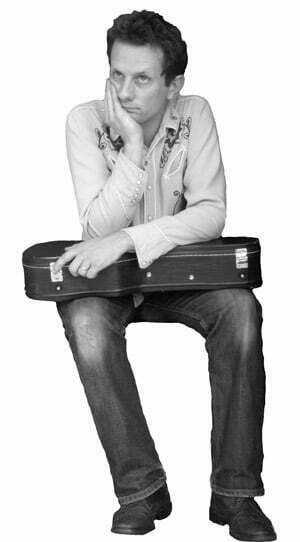This is my absolute beginner’s guide to playing the ukulele and assumes no prior musical knowledge. The idea is that it’ll get you singing and playing lots of tunes, and it won’t have been a struggle. The ukulele is an easy instrument to learn and quickly rewarding. The most important thing to remember is to have fun with it and not get bogged down. If you’re finding anything tricky, have a cup of tea.
There are lots of different ways to strum your ukulele. We can split basic ukulele strumming into two strokes: the downstroke (when your finger moves down across the strings) and the upstroke (when your finger moves up across the strings). Let’s split our four beats up and think of them as 1 bonk, 2 bonk, 3 bonk, 4 bonk. To try using the downstroke and the upstroke, alternate each one. Play the downstroke on each 1,2,3,4 and the upstroke on the 4 ‘bonks’ like this:

If you play these evenly, it will sound like this:
Or you can swing it a little, using the same pattern as above. This is called a ‘shuffle’, although you don’t need a pack of cards:
Another option, and to get a more rocky feel, is to play all downstrokes, but putting the emphasis on the ‘bonk’ beats, like this:
For a reggae-type feel, mute the strings (by resting your left hand fingers across the strings) on the 1 and 3 beats, and play a chord on the 2 and 4 beats, like this:
I should also mention a waltz. This tune only has 3 beats per bar, so we count 1,2,3,1,2,3,1,2,3 etc, with the emphasis on the 1 beat. Some famous pop songs in waltz time are ‘The House of the Rising Sun’ made famous by The Animals, ‘Norwegian Wood’ by the Beatles, and ‘Manic Depression’ by Jimi Hendrix. A waltz can be played as one downstroke and two upstrokes to get that ‘boom cha cha, boom cha cha, boom cha cha’ feel. This is how it sounds:
The different ways to strum a ukulele quickly become endless, and there are masses of great tutorials on YouTube and other sites which give much more detail about triple strokes, fan strokes, and more complicated strums. Even a C, F and G7 chord can sound pretty fancy of you practice your strumming:
So far you’ve only learnt 3 Major chords. Now for a Minor chord. A minor chord has it’s second note down a semitone, which has the effect of making it seem a bit more sad, or mournful, than a major chord. This one is a doddle to play, and it’s called A Minor:
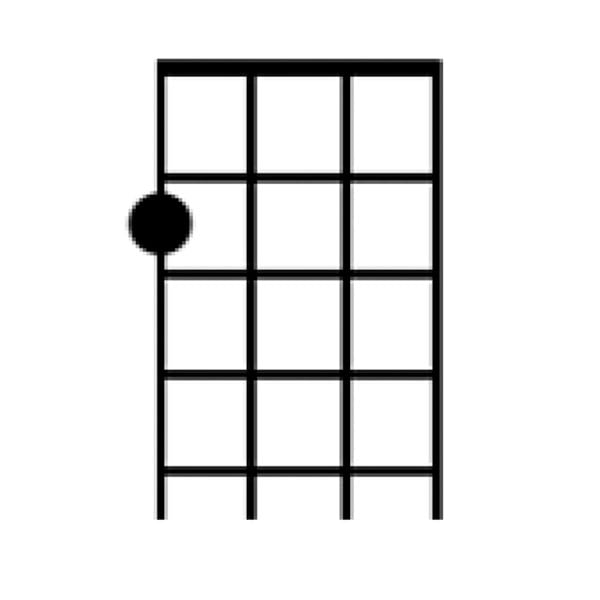
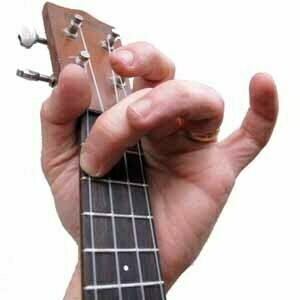
This is easiest to play with your middle finger, as shown in the image.
And it sounds like this:
Now by adding this A Minor chord in with the C, F and G7, we can have a go at another tune. It’s Bob Marley’s No Woman, No Cry.
Here’s the music for the chorus:
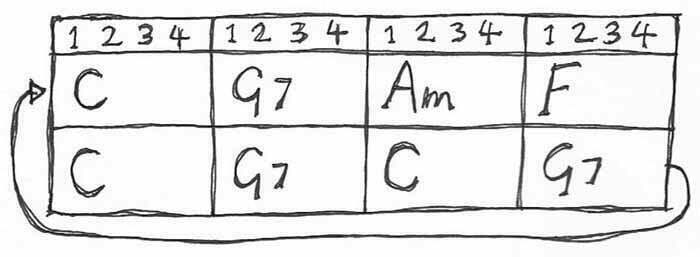

And the verse.
And here’s how it sounds – it starts with a chorus:
About a million other songs go over pretty much this chord progression, from Down Under by Men at Work to So Lonely by the Police, as these guys demonstrate.
A ukulele lesson wouldn’t be complete without leaving you with the tools to be able to play this classic tune. It’s Oo Bee Doo, I Wanna Be Like You, from The Jungle Book (originally sung by the great Louis Prima).
It has a few extra chords, but they all fall very easily under the fingers.


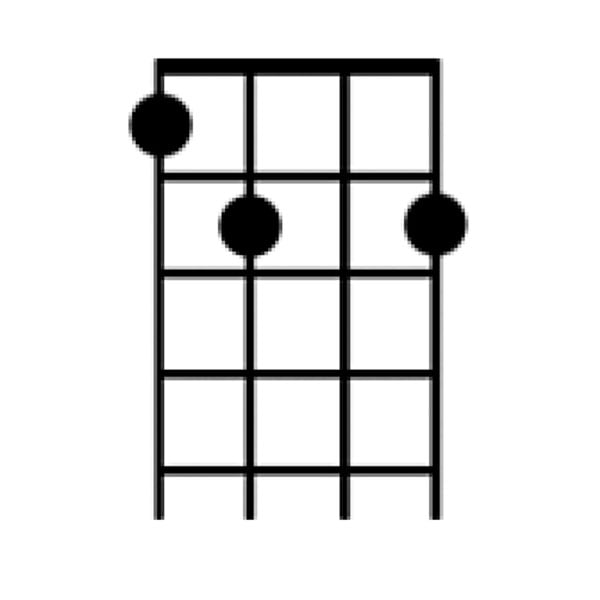



(This is the simple way to play D7. A different way to play it is by laying you first finger across the 2nd fret of all the strings and adding your middle finger onto the third fret of the A string.)
This is the music for the verse (play it twice, adding the G7 only on the second time):


And the chorus (which keeps repeating).
And this is me singing it. I have to admit I listened to it a bit too much as a kid as you can probably tell from my impassioned delivery.
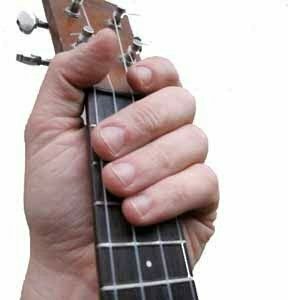
Chord Z is a great chord to know. Named by the Ukulele Orchestra of Great Britain, this is a chord you can play at any time in any piece of music, and it always sounds good.
This is how you play it. All you have to do is rest your fingers gently across the strings so they are touching them but not pushing the strings onto the fretboard. Then strum. It should sound like this:
Often, a tune needs a good, strong backbeat, and chord Z is just the ticket for this. Or you might want to imitate the ticking of a hit-hat – chord Z. Most importantly, it’s also a great chord to play if you’ve lost your place in the music and have no idea what to do – chord Z always fits.
If you want to play with other ukulele players, the key thing to remember is that you don’t all have to do the same thing. A gaggle of ukuleles all strumming away sounds fine, but it sounds much better if you begin arranging parts for yourselves. On its own, an individual part may seem boring or unchallenging, but combining several simple parts creates a unified whole that sounds better than anything one individual plays.
For example, playing a tune like ‘When the Saints Go Marching In’ with five ukulele players, you could divide up the playing like this:
One person strums along on all four beats.
One person plays the ‘off-beat’ (this is playing a crisp, short chord on the 2 and 4 beats – this could also be chord Z).
One plays only the first beat of the bar (a power chord).
Another plays the tune.
Another plucks a harmony to the tune.
If you can also induce a bass player to join in, playing root notes on beats 1 and 3, it’ll start sounding like a real band.
An indispensable bit of kit for all ukulele players is a complete ukulele chord chart, showing finger positions. I’ve made some chord sheets which fit all the chords you’re ever likely to need onto one piece of A4 paper, so you can keep it in your ukulele case.
Click the button below to download your very own free chord chart, featuring probably every chord you’ll ever need to play.
Given the tools you now have at your fingertips, you can start to write your own songs or play other people’s. In any music shop and on the internet you can find heaps of sheet music. Nearly all notated music has the chords written above the lyrics, and now that you have your chord sheet, you can simply mark in the ukulele chord boxes on the music and play any song you like.
There are many good websites out there that can help you further, as well as plenty of teachers and instructional books. My best advice would be to do what you want and play what you want. And don’t get caught up thinking there is a set repertoire for the ukulele – if you like a tune, have a go at playing it. I hope you enjoy playing the ukulele and have learned something from this little tutorial. Please feel free to get in touch if there are things here you don’t understand or if you’d like to point out any mistakes I’ve made…
Perhaps it’s a little late for a warning, but better late than never. You should be aware that:
There’s no such thing as owning just one ukulele.
The ukulele has no sustain.
People often ask you about George Formby.
The ukulele is irrepressibly cheerful, and sometimes you don’t want to be cheerful.
